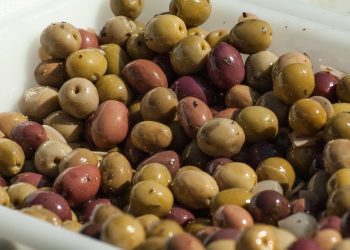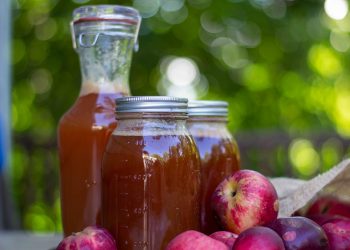Have you ever woken up and felt like your joints were made of rusty hinges? If you’re nodding along, you’re not alone. Joint pain affects millions of people, and the quest for relief can often lead to a jungle of medications and treatments that may or may not work. But what if I told you there’s a natural remedy that’s been gaining attention for its potential benefits? Enter moringa—a plant that’s becoming a go-to for those seeking to alleviate joint pain.
In this article, we’ll explore five natural remedies that incorporate moringa leaves for joint pain relief. We’ll look at how moringa can help, alongside other natural methods that might just make a difference. So, grab a cup of tea, get comfy, and let’s dive in!
What is Moringa?
Moringa, often dubbed the “drumstick tree” or “miracle tree,” is native to parts of Africa and Asia. Its leaves, pods, and seeds are packed with nutrients, including vitamins A, C, and E, calcium, potassium, and protein. But what makes moringa particularly interesting for joint pain is its anti-inflammatory properties.
Some studies suggest that moringa may help reduce inflammation in the body, which is a key factor in joint pain. According to a study published in the Journal of Medicinal Food, the leaves of moringa have been shown to have significant anti-inflammatory effects, making them a potential ally for those suffering from arthritis or other inflammatory joint disorders (Nagarathna et al., 2015).
1. Moringa Tea
How It Works: One of the simplest ways to enjoy the benefits of moringa is by brewing a tea. The leaves contain high levels of antioxidants that can help combat oxidative stress in the body, a contributor to inflammation.
How to Make It:
- Take 1-2 teaspoons of dried moringa leaves or a teabag.
- Boil water and pour it over the leaves.
- Let it steep for 5-10 minutes.
- Strain and enjoy!
Pros:
- Easy to prepare.
- A soothing ritual that can be enjoyed daily.
Cons:
- The taste might be an acquired one for some.
- High intake could lead to digestive upset.
2. Moringa Oil
How It Works: Moringa oil is derived from the seeds of the moringa tree and is rich in oleic acid, which is known for its anti-inflammatory properties. When applied topically, it can help soothe sore joints and muscles.
How to Use It:
- Warm a small amount of moringa oil.
- Massage it gently into the affected area.
- Allow it to absorb for at least 30 minutes before rinsing.
Pros:
- Direct application can provide quick relief.
- It’s a natural moisturizer, which can benefit the skin as well.
Cons:
- Some people may have allergic reactions to topical oils.
- Not a substitute for deeper treatments if the pain is severe.
3. Moringa and Turmeric Smoothie
How It Works: Turmeric is another powerhouse when it comes to fighting inflammation. Combining moringa with turmeric in a smoothie not only tastes delicious but also packs a serious anti-inflammatory punch.
How to Make It:
- Blend 1 cup of almond milk, 1 banana, 1 teaspoon of moringa powder, and 1 teaspoon of turmeric powder.
- Add a dash of black pepper (which helps with turmeric absorption) and honey for sweetness.
- Blend until smooth and enjoy!
Pros:
- A tasty way to incorporate both moringa and turmeric into your diet.
- Nutrient-dense and energizing.
Cons:
- Those with certain medical conditions should consult their doctor before adding turmeric, as it can interact with medications.
4. Moringa Supplement Capsules
How It Works: For those who find it challenging to incorporate moringa into their diet, supplements are a convenient option. Moringa capsules can deliver a concentrated dose of the plant’s beneficial compounds.
How to Use It:
- Follow the dosage instructions on the supplement label.
- Take with a meal for better absorption.
Pros:
- Easy to take, especially for those with busy lifestyles.
- Concentrated benefits without the need for preparation.
Cons:
- Supplements can vary in quality; it’s essential to choose a reputable brand.
- May not provide the same holistic benefits as consuming whole foods.
5. Moringa Leaf Powder in Cooking
How It Works: Adding moringa leaf powder to your meals can be an effective way to incorporate its benefits into your diet. It’s versatile and can be added to soups, stews, or even sprinkled on salads.
How to Use It:
- Start with 1 teaspoon of moringa powder in your favorite dish.
- Stir it in towards the end of cooking to preserve its nutritional value.
Pros:
- An easy way to boost the nutritional content of everyday meals.
- Can be used in a variety of recipes.
Cons:
- The taste might not be appealing to everyone and could alter the flavor of some dishes.
- Overconsumption can lead to digestive issues.
FAQs
Q1: Is moringa safe for everyone?
While moringa is generally safe for most people, those with certain medical conditions or pregnant women should consult a healthcare provider before using it.
Q2: How long does it take to notice the effects of moringa?
Some people may notice improvements in joint pain within a few days, while others may take a few weeks. Consistency is key!
Q3: Can I use moringa for other health issues?
Absolutely! Moringa is known for its potential benefits in boosting immunity, improving digestion, and even supporting heart health.
Q4: Are there any side effects of moringa?
In moderate amounts, moringa is safe for most people. However, excessive consumption can lead to digestive issues. Always start with small doses to see how your body reacts.
Conclusion
Navigating joint pain can be a frustrating journey, but incorporating natural remedies like moringa can offer a glimmer of hope. Whether you choose to sip on moringa tea, massage with moringa oil, or whip up a smoothie, there are various ways to make this nutrient-rich plant a part of your routine.
While research is ongoing, the anecdotal evidence and emerging studies suggest that moringa can be a valuable ally in the fight against joint pain. However, remember that everyone’s body is different, and what works for one person might not work for another.
So, if you’re considering adding moringa to your wellness arsenal, take it slow, listen to your body, and consult with a healthcare professional if you have any concerns.
Disclaimer: This article is for educational purposes only and is not a substitute for professional medical advice. Always consult a qualified healthcare provider before making changes to your health routine.
References
- Nagarathna, R., et al. (2015). Anti-inflammatory effects of Moringa oleifera leaves. Journal of Medicinal Food, 18(3), 363-369. https://doi.org/10.1089/jmf.2014.3231
- Mayo Clinic. (n.d.). Arthritis. Retrieved from https://www.mayoclinic.org/diseases-conditions/arthritis/symptoms-causes/syc-20313784
- Cleveland Clinic. (n.d.). Joint Pain: Causes, Symptoms, and Treatment. Retrieved from https://my.clevelandclinic.org/health/diseases/9868-joint-pain
Get Your FREE Natural Health Guide!
Subscribe now and receive our exclusive ebook packed with natural health tips, practical wellness advice, and easy lifestyle changes — delivered straight to your inbox.















